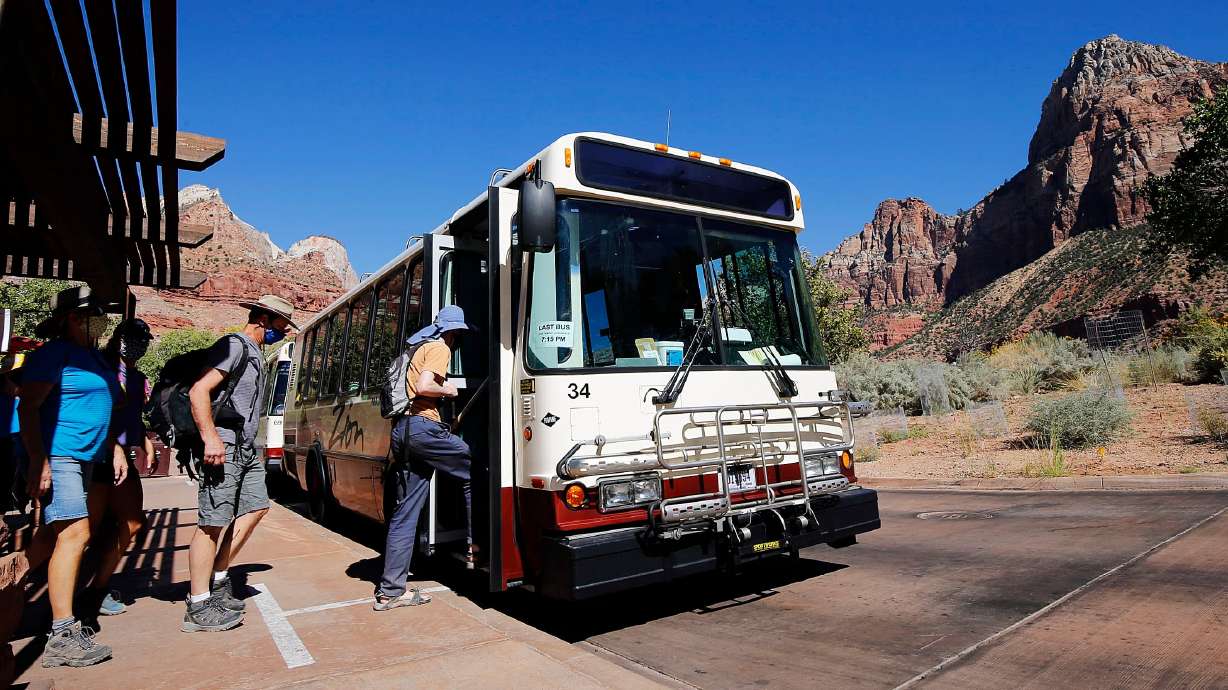Estimated read time: 3-4 minutes
This archived news story is available only for your personal, non-commercial use. Information in the story may be outdated or superseded by additional information. Reading or replaying the story in its archived form does not constitute a republication of the story.
SALT LAKE CITY — It was nearly 15 years ago that Grand Canyon National Park banned the use of plastic water bottles, which, at the time, made up a third of the waste generated by visitors.
The park made major investments in water filling stations and reduced its waste by 20%.
Soon after, 23 other national parks made the same move.
"All told, the 23 plastic-free, bottle-free parks prevented the disposal of 2 million plastic bottles per year," said Colleen Teubner, a litigation and policy attorney for Public Employees for Environmental Responsibility.
By 2017, however, the ban was removed and subsequently, plastic pollution ramped up.
In a webinar this week hosted by Public Employees for Environmental Responsibility and the group Beyond Plastics and Oceana, experts discussed the ramifications of a throwaway society when it comes to plastic and the harm it can cause to public health and the environment.
Making up ground?
Interior Secretary Deb Haaland last year implemented an order that is part of the larger Biden administration goal for all agencies, to the extent feasible, to ban the procurement of single-use plastics by 2032.
Teubner said the policy looks good on paper, but is too laborious with a timeline that drags on.
"Once the plan is implemented, the National Park Service will then conduct outreach and education to shift public behavior. Finally, the National Park Service will measure data and report on its findings. While these steps may seem sufficient on paper on further examination, the plan devotes the next two years to policy development, with no significant implementation set to begin until five years out," Teubner said. "It also allows individual parks to continue executing new multi-year concessions' contracts for sales of disposable plastic water bottles to visitors."
She added that the plan would limit individual parks from moving faster, since any parks' specific plastic use reductions would require Washington office approval.
"While these broader policy goals are admirable, it is ultimately up to the individual park superintendents to implement them on the ground. Because of the power superintendents possess throughout the process, we must ensure that superintendents support the effort to eliminate plastics and be held accountable for goal implementation."
She said Public Employees for Environmental Responsibility has filed Freedom of Information requests with regional headquarters within the national park system to determine sustainability practices, the approach to waste management and policies on the distribution of single-use plastics.
While the information continues to trickle in, Teubner said there are examples of success stories — pointing to Muir Woods National Monument in California.
"At Muir Woods, water may only be sold in reusable or recyclable aluminum bottles. Plastic bottles are prohibited. Specialty beverages may only be sold in aluminum cans or compostable cardboard containers and the concessionaire provides a water bottle filling station," she said.
Water bottles and waste
A report cited by CNN indicates that more than a million water bottles across the globe are sold every minute, and global sales could double by 2030.
The University of Southern California noted that in the United States alone, less than 8% of all discarded plastics are recycled. It said its own campus-wide ban implemented in 2022 has saved over 3 million plastic bottles from ending up in landfills. Scientists estimate it takes about 450 years for a plastic bottle to decompose.
Zion National Park, Utah's most popular national park, pulled in more than 4.6 million tourists in 2023, according to numbers in a National Park Service database.
The park does not offer single-use water bottles for sale within its boundaries, but rather a reusable bottle is offered at multiple locations, as well as free water filling stations.
Teubner said reducing plastic bottle waste is a matter of public education and more outreach to consumers, who can take simple steps to reduce their own footprint in this arena.
The group also stressed it also amounts to getting back to old customs and traditions used by our parents and grandparents — where containers were washed and reused, such as milk bottles or glass bottles of soda pop.









